Minimally Invasive Options for In-Office Sinus Surgery
Updated January 2025
You’ve tried the saline rinses, allergy treatment and even steroids, but nothing seems to provide relief for your chronic sinusitis. Don’t be discouraged: We offer hope and help. Sometimes medicine isn’t enough to curb these troublesome symptoms, and surgery may be warranted.
Thanks to our extensive minimally-invasive surgical services, you have an option that is both convenient and cost-effective.
New Hope for Sinus Relief
Sinusitis is one of the most common chronic health care problems in the U.S., afflicting about 37 million Americans annually. The condition significantly impacts patients physically, functionally, and emotionally. It also takes a toll on quality of life.
Chronic sinusitis can be treated using antibiotics, steroids, nasal saline and treatment of underlying conditions such as allergies.
However, for over 20% of patients, medical therapy does not provide adequate symptom relief, and sinus surgery is often the next step in the treatment process.
Typically, this type of surgery is performed in the operating room under general anesthesia, but now, patients have the option of a minimally invasive treatment in our offices.
At Raleigh Capitol ENT, we constantly strive to provide comprehensive services for our patients with sinonasal disorders and are pleased to offer several procedures that can be performed in the office under local anesthesia. These include balloon sinuplasty for chronic sinusitis, turbinate reduction for nasal congestion, and nasal polypectomy.
The Benefits of Minimally-Invasive Treatment at Raleigh Capitol ENT
Performing surgical sinus procedures in the office provides many benefits including:
- Minimally invasive
- Less bleeding
- Fast recovery time
- No tissue removal
- No need for general anesthesia
- More economical than having the procedure at a hospital or outpatient facility
We’ll take a look at some of these procedures, what they are, how they’re performed and how they can help you.
In-Office Balloon Sinuplasty
This technology has been in use since 2005, and we were the first ear, nose and throat practice in Raleigh to offer and perform this treatment in the office.
This FDA-approved, minimally invasive procedure treats chronic and recurrent acute sinusitis, providing help for those who have not found relief through medical therapy or allergy treatment.
Chronic sinusitis affects roughly 14.6% of the U.S. population. Chronic rhinosinusitis (CRS) occurs when the nasal and sinus passages are inflamed or irritated for three months or longer. It can be caused by a variety of factors, including viruses and even sinus obstructions.
What Happens During a Balloon Sinuplasty?
When you have a balloon sinuplasty, you’re anesthetized with topical and local anesthetics (similar to the way it is done during a dental procedure).
Then the sinuses are visualized with an endoscope and camera. An endoscope is a long, thin, flexible tube.
Then, a lighted guidewire is positioned gently into the sinus to be dilated. A small balloon is then threaded over the wire, inflated for 5 to 10 seconds, and the sinus is dilated. The balloon is then deflated and removed.
The next sinus is then treated in the same fashion.
If necessary, the sinuses can be irrigated with saline during the procedure.
Several studies testify to the procedure’s success rate. For example:
Positive effects of balloon sinuplasty can last for two years after the procedure.
In one study, almost 93% of patients demonstrated dramatic improvement a week after the surgery.
Which Patients Benefit the Most From Balloon Sinuplasty?
Sinuplasty has proven itself to be a very effective treatment for those dealing with chronic rhinosinusitis.
What Are The Symptoms of Chronic Rhinosinusitis?
Please schedule an appointment with us if you demonstrate any of these symptoms:
- Pain and pressure
- Cough
- Nasal drainage
- Congestion
- Ear pain and/ or discomfort
- Decreased sense of smell
- Low-grade fever
The Latest Clinical Information on Balloon Sinuplasty
While balloon sinuplasty offers several advantages, it isn’t right for everyone. Recently, the American Academy of Otolaryngology – Head and Neck Surgery announced a new clinical consensus of the best practices for the procedure. This consensus clarified the type of patients who receive the greatest benefit from balloon sinuplasty. This “game-changing clinical consensus statement” affects the way ENT physicians across the country will evaluate and treat patients.
Raleigh Capitol Ear, Nose and Throat is dedicated to providing advanced treatments based on the latest clinical research.
We are constantly up-to-date on the most recent clinical guidelines and innovative breakthroughs that enable us to provide our patients with the highest level of service possible. By utilizing these techniques, we are able to deliver care in an efficient and compassionate manner.
Can You Benefit From Balloon Sinuplasty? Following Are Some Important Criteria
Those who can benefit the most from balloon sinuplasty include:
- Those who have had CT scans showing problems with blocked or inflamed sinuses.
- Those who have had chronic sinonasal symptoms for longer than three months
- Those with sinus problems who have also had previous sinus surgery.
- Those who need ongoing management of recurrent acute sinusitis.
- Those who need to have it as a complementary procedure to FESS (functional endoscopic sinus surgery).
The Panel Also Outlined Cases Where Balloon Sinuplasty is NOT Recommended
- It should NOT be used to manage or treat sleep apnea in patients who do not show any symptoms of sinus problems.
- It should NOT be done for patients who have nasal polyps.
- It’s NOT appropriate for patients without sinus/nasal symptoms and a normal CT of their sinuses.
- Balloon sinuplasty should NOT be used to manage headaches in patients who don’t have chronic sinusitis or recurrent acute sinusitis.
What Are the Advantages of Balloon Sinuplasty?
There are several benefits of balloon sinuplasty. These include:
- You’re able to return to work and your regular activities almost immediately
- You’ll experience less bleeding
- You can have the procedure in our office using local anesthesia
- There is no tissue removal or nasal packing
- Most patients have positive results even two years after the procedure
If you’re not sure if you’re a candidate for balloon sinuplasty, or if you’re not sure why you’re having chronic sinus problems, please contact us. We’ll be happy to be partners in your care and answer any questions you may have.
Turbinate Reduction: A Solution to Chronic Nasal Congestion
In addition to balloon sinuplasty, we are also offering turbinate reduction in the office for patients with nasal congestion and sinus issues due to turbinate hypertrophy. Turbinate hypertrophy means the turbinates are enlarged, which often causes difficulty breathing and sinus problems.
What Are Turbinates?
These are small structures in your nose that cleanse the air that you breathe. In some cases, these turbinates may become enlarged or inflamed, causing difficulty breathing. We can easily treat enlarged turbinates in our office.
What Happens During Turbinate Reduction?
During this in-office procedure, you’re anesthetized with topical and local anesthesia, which means you won’t have to be “asleep” during it. We use radio frequency energy to coblate the turbinates. This removes the problem tissue, and when the area heals, the turbinates have returned to normal size.
The convenience of having this done as an in-office procedure means that you’re able to resume your everyday activities faster than you would if you had an inpatient procedure.
Nasal Polyp Removal: Clearing Nasal Obstruction
For our patients who have recurring nasal polyps causing nasal obstruction, we are offering nasal polypectomy (polyp removal) in the office under local anesthesia.
What Are Nasal Polyps?
These are benign, grape-shaped growths that appear on the lining of your nasal passages. Usually, they are the result of inflammation, and they can cause recurrent infection, make it difficult for you to breathe, and even block sinus passages.
Sometimes, medication alone can help shrink nasal polyps. But when this is not successful, surgery is necessary.
Fortunately, there is an FDA-approved treatment for nasal polyps. Dupilumab is medication that is administered by injection, and it can significantly reduce the size of the nasal polyps. In addition, those who used dupilumab stated that they regained their ability to smell or their ability to smell improved.
Those who used dupilumab also did not need as many oral steroids.
Want to know more about nasal polyps and how we can help you? Check out this additional article on nasal polyps and nasal irrigation systems.
Raleigh Capitol Ear, Nose, and Throat Has the Best Options for Minimally Invasive Surgery
At Raleigh Capitol ENT, our board-certified sinus surgeons constantly strive to provide comprehensive services for our patients with sinonasal disorders.
While there are several minimally invasive procedures that can help you breathe easier and eliminate chronic sinusitis symptoms, this type of surgery can also be effective in treating other disorders. We’ll take a closer look at one of them: orbital decompression.
What Is an Orbital Decompression and Why Is It Done?
An orbital decompression is a delicate ENT surgery done to relieve pressure on the eyes. When too much pressure is placed on the eyes, it causes them to bulge and an orbital decompression is necessary to relieve the pressure in order for the eyes to fit back into their sockets.
Fortunately, if you need this procedure, our experienced ear, nose and throat doctors in Raleigh can provide the comprehensive care you need. You can rest assured because all of our otolaryngologists are recognized as leaders in their field.
When would you need orbital decompression surgery?
You would need this surgery if you have problems resulting from:
- An accident or injury
- A severe eye infection
- Tumors
- Graves’ disease
What is Graves’ Disease?
This is an autoimmune disease that causes hyperthyroidism (an overactive thyroid). Autoimmune diseases are conditions where instead of attacking diseased cells and protecting you from infection, your body attacks healthy cells instead. An overactive thyroid can cause symptoms such as:
- A rapid or irregular heartbeat
- Unexplained weight loss
- Tremors
- Sweating
- Fatigue
- Brittle hair or thin skin
According to the Mayo Clinic about 30 percent of those who have Graves disease develop a condition called Graves’ ophthalmopathy, which affects the tissues and muscles around the eyes. Those with this disorder may eventually develop excess tissue within the eye sockets, causing them to bulge.
If you have Graves ophthalmopathy, you’ve probably noticed issues such as:
- Eye irritation and pain
- Excessive tearing
- Eye pressure
- Inflamed, red eyes
- Puffy eyelids
- Sensitivity to light
- Double vision
- Gritty sensation in the eyes
In certain cases, Graves ophthalmopathy can cause vision loss, so if you show these symptoms, we encourage you to speak to your healthcare provider.
What Happens During an Orbital Decompression?
This is a type of minimally invasive endoscopic sinus surgery that is performed under general anesthesia, which means that you will be “asleep” during the procedure. Because it is performed endoscopically, there are no large incisions and no scarring.
While you are under anesthesia, one of our surgeons gently threads an endoscope through your nose and the sinus near the eyes where we can access the bony structures of your eye socket. Pieces of these bones, along with some fatty tissue, are removed. This gives the eye more room so it can settle into its socket.
How Will I Recover From an Orbital Decompression?
Depending upon your individual situation, this type of surgery is usually done on an outpatient basis, and we’ll closely monitor your recovery after the procedure. Because you won’t need an eye patch, you’ll be able to see immediately after the surgery.
There is some pain the day after surgery, but this can be easily managed with medication. There may be some bruising and swelling for two weeks. We will schedule follow-up appointments to monitor your progress.
We Are The Leaders of All Aspects of ENT Surgery in Raleigh
Orbital decompression is a delicate procedure. It deals with tissue and structures that are connected to the eye and are in close proximity to parts of the brain. Fortunately, our skilled surgeons have the experience and expertise needed to conduct this complicated ENT surgery. At Raleigh Capitol ENT, we’re also able to offer such advanced procedures as:
- Frontal sinus surgery
- Mucoceles/ cyst drainage
- Sinus/ skull base tumor removal
- Endoscopic skull base surgery
If you are concerned about whether or not you could benefit from orbital decompression ENT surgery, please contact us to schedule an appointment.
Whatever Your ENT Needs, Our Extensive Experience and Compassion Provide the Best in Quality ENT Care
Do you need a procedure, but are worried about recovery time? Our minimally-invasive procedures pave the way to a faster recovery with less pain. Our comprehensive care means we can manage anything from ear tube placement to more serious issues such as orbital decompression.
Experience the difference: Trust our leading otolaryngologists in Raleigh and see why we are the practice of choice for so many Triangle residents. Schedule an appointment today. We would consider it a privilege to be your medical home.
Key Takeaways:
- Some of the benefits of in-office, minimally-invasive sinus surgery are:
- Less bleeding
- Fast recovery time
- No tissue removal
- No need for general anesthesia
- More economical than having the procedure at a hospital or outpatient facility
- Balloon sinuplasty–one of our in-office procedures–has a more than 90% success rate in treating chronic sinusitis. The benefits of the procedure can last two years, and many patients can show improvement a week after this minimally invasive surgery.
- Turbinate reduction decreases the size of enlarged or inflamed turbinates, which are small nasal structures that purify the air you breathe. As a result, you’re able to breathe easier.
- Orbital decompression occurs when too much pressure causes the eye to bulge, and a procedure is needed to return the eye to its normal state. This is an extremely delicate procedure, and our surgeons are experts with decades of extensive experience in orbital decompression surgery. It is performed as an outpatient under general anesthesia.
- Nasal polyps are growths that appear on your nasal passage lining. When they are inflamed they cause difficulty breathing. If medication is unsuccessful, they will need to be surgically removed.
The content within this article and others on this website is only for educational purposes and should not be considered as medical advice. For any questions or concerns, please consult with your healthcare provider.
=====
Sources:
American Academy of Otolaryngology – Head and Neck Surgery, “Sinusitis,” https://www.enthealth.org/conditions/sinusitis/
American Academy of Otolaryngology – Head and Neck Surgery, “Turbinate Hypertrophy,” https://www.enthealth.org/conditions/turbinate-hypertrophy/
American Rhinologic Society, https://www.american-rhinologic.org/
American Sinus Institute, “Balloon Sinuplasty Recovery: What to Expect,” https://www.americansinus.com/blog/balloon-sinuplasty-recovery-what-to-expect#
Hong P, Pereyra CA, Guo U, Breslin A, Melville L. Evaluating Complications of Chronic Sinusitis. Case Rep Emerg Med. 2017;2017:8743828.https://pmc.ncbi.nlm.nih.gov/articles/PMC5253506/#:~:text=1.,possible%20debilitating%20or%20fatal%20sequelae.
Mayo Clinic, “Graves’ Disease,” https://www.mayoclinic.org/diseases-conditions/graves-disease/symptoms-causes/syc-20356240
Mayo Clinic, “Nasal Polyps,” https://www.mayoclinic.org/diseases-conditions/nasal-polyps/symptoms-causes/syc-20351888
Raghunandhan S, Bansal T, Natarajan K, Kameswaran M. Efficacy & outcomes of balloon sinuplasty in chronic rhinosinusitis: a prospective study. Indian J Otolaryngol Head Neck Surg. 2013 Aug; https://pmc.ncbi.nlm.nih.gov/articles/PMC3738804/#:~:text=In%20our%20study%2C%20the%20structured,in%20the%201st%20postoperative%20week.





